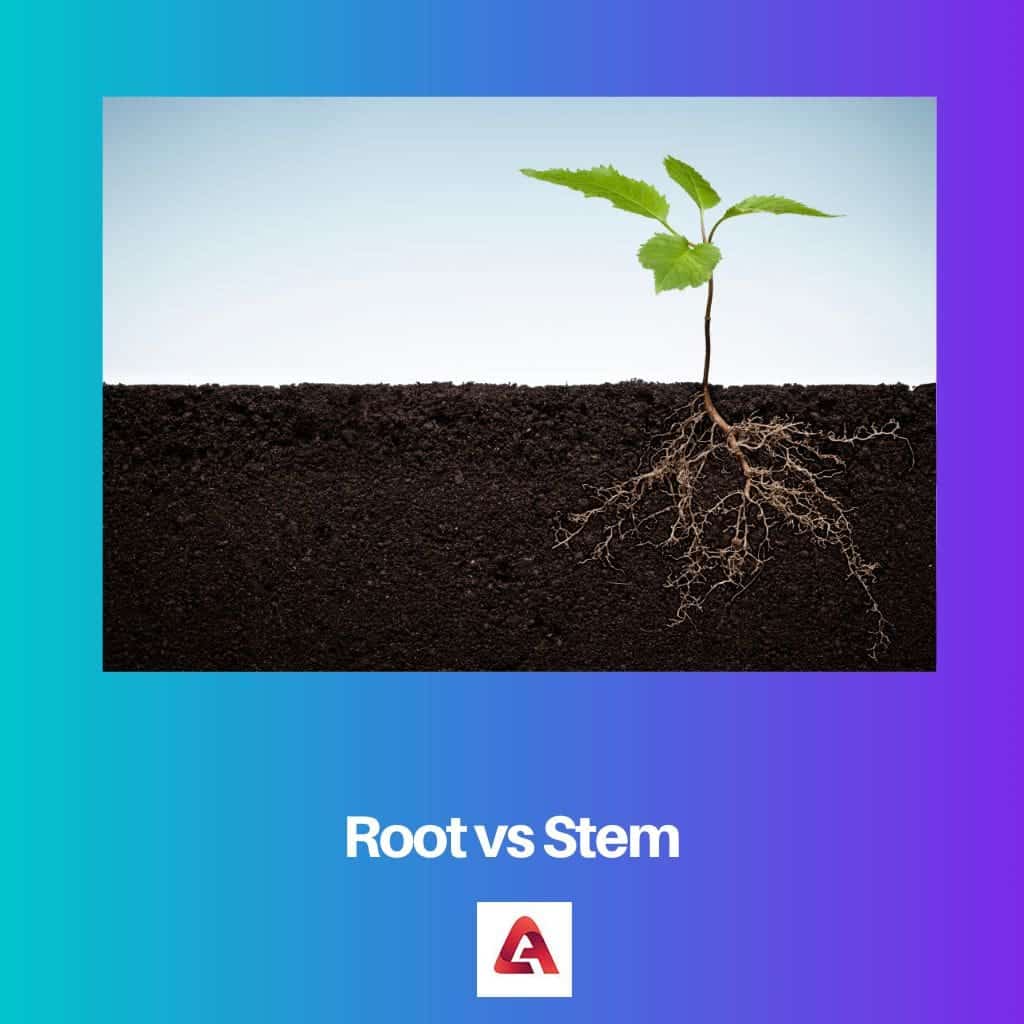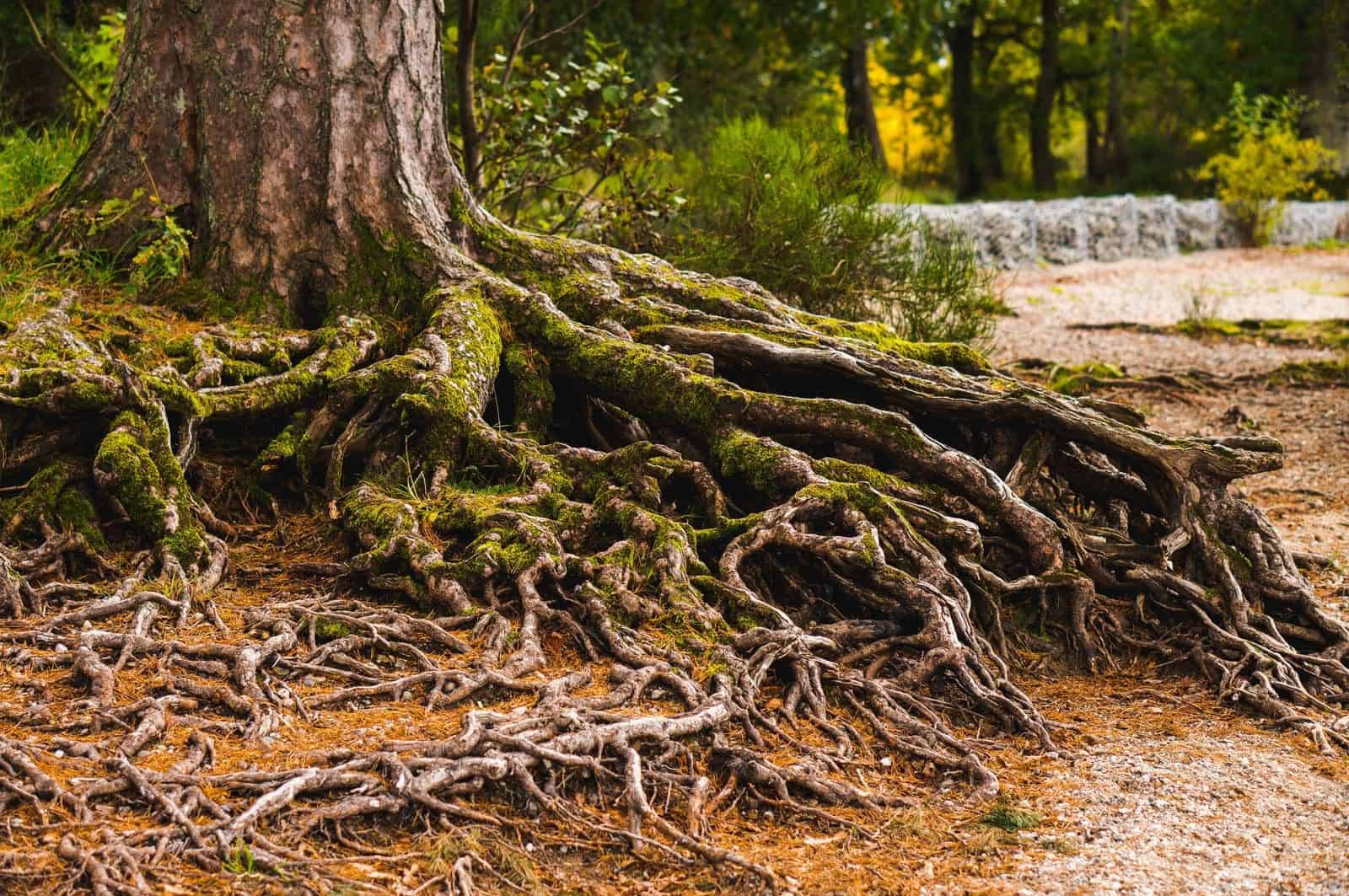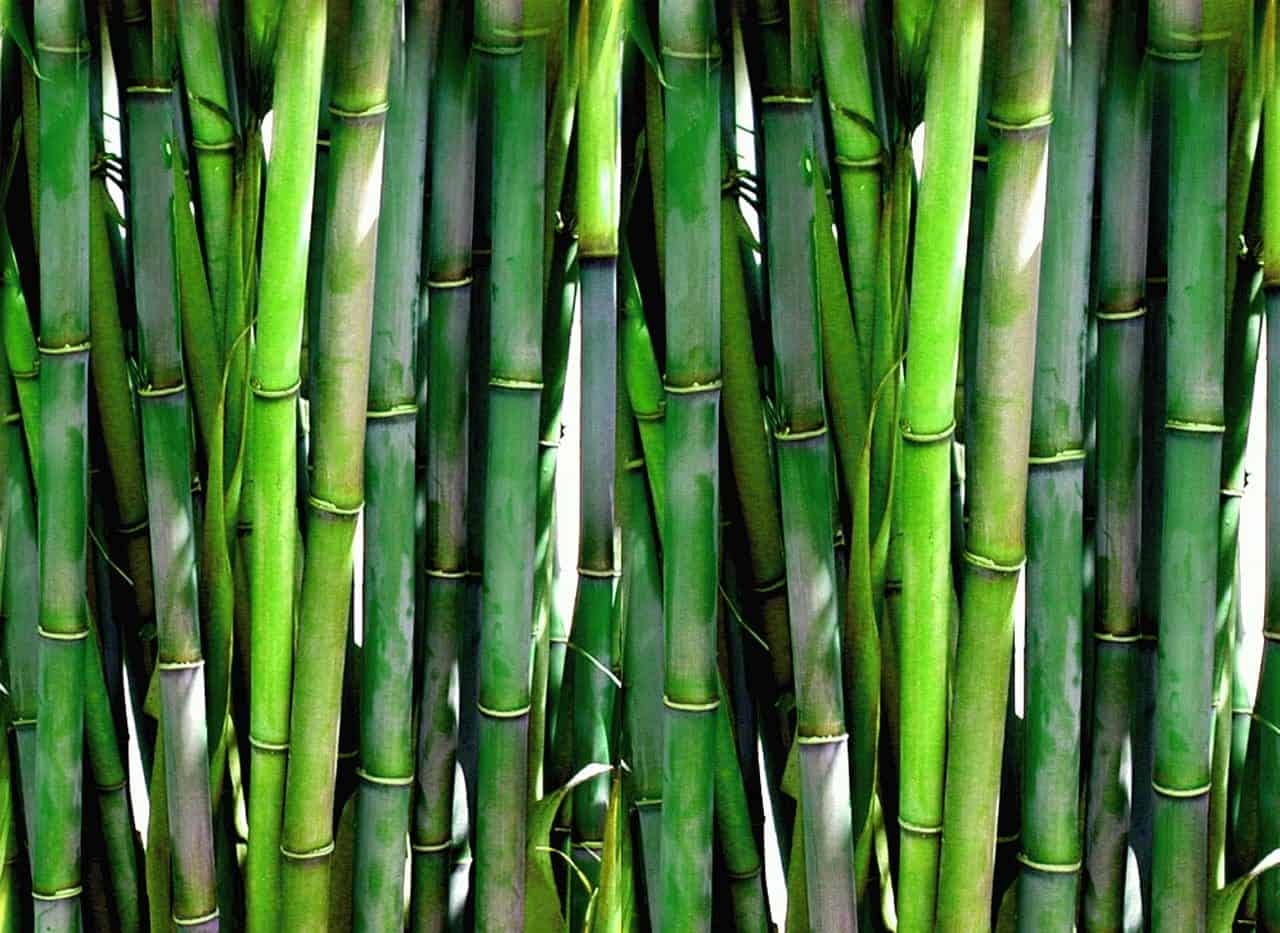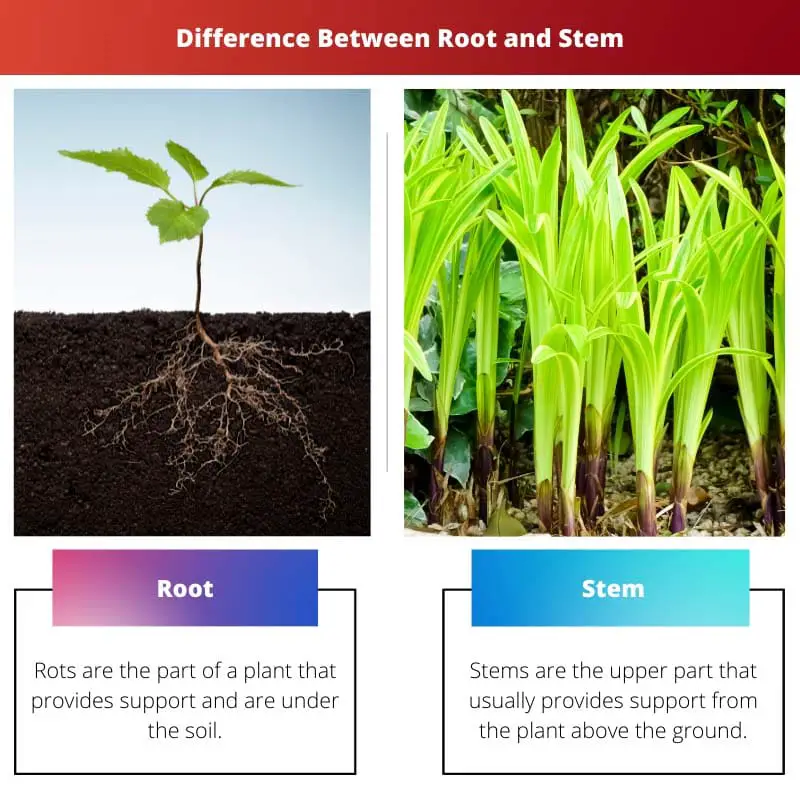There are different parts of a plant that can be confusing. Especially root and stem might seem confusing initially, but they have a clear difference.
Between roots and stem, roots are the foundation of the plant, and their health is essential for the healthy growth of the plant.
Key Takeaways
- “Root” is part of a plant that grows underground and absorbs water and nutrients from the soil, while “Stem” is part of a plant that grows above ground and supports the leaves, flowers, and fruits.
- Roots are thicker and more branched than stems, and they do not have leaves or buds, while stems are thinner and more elongated and have leaves and buds.
- Roots and stems have different functions in the plant, with roots responsible for anchoring the plant and absorbing water and nutrients, and stems responsible for supporting the plant’s structure and transporting water and nutrients from the roots to the leaves.
Root vs Stem
Roots lie underneath the ground, and the stem is the part that lies above the roots. Roots help absorb and take all the nutrients from the soil, whereas the stem conducts and transports the absorbed nutrients to different parts of the plant. Both roots and stems are known as the structural axes of any vascular plant.

The root is the functional part of the plant that lies below the soil and is vascular. It holds the plant firmly to the ground, absorbing the nutrients and transferring the good stuff from the soil to the plant.
They also store nutrients sometimes.
The stem is part of the plant that holds it above the soil. It carries the absorbed nutrients, fertilizers, and minerals from the roots to the details of the plant. It supports and has the flowers, leaves, and buds together in place.
The stem nodes are the parts that branch further into smaller stems to hold the flowers and leaves.
Comparison Table
| Parameters of Comparison | Root | Stem |
|---|---|---|
| Definition | Rots are part of a plant that provides support and are under the soil. | Stems are the upper part that provides support from the plant above the ground. |
| Geotropism | Roots grow along the direction of gravity and are positively geotropic. | Stems grow away from gravity towards the sky and are negatively geotropic. |
| Phototropism | Roots are negatively phototropic as they grow in the direction opposite of that light. | The stem is positively phototropic as they grow upwards towards the sun. |
| Function | It provides support, holds it firmly with the soil and includes water, moisture, and nutrients from the soil. | Transports the substances and supports leaves, fruits, and flowers. |
| Above or below the ground | They are under the ground and can also be above the soil in aerial plants. | The stem is always above the ground and rarely under the soil. |
What is Root?
The roots play a significant role; they are the only part of the plant that carries and transports the water and nutrients from the soil. They hold the plant firmly and are, in most cases, under the soil.
A few plants have areal roots, which means they lie entirely above the ground, or a part of the root emerges outside the soil and lies above the ground.
One can see the four zones into which the roots are divided when absorbed through a microscope. These are the root caps, root hairs, apical meristem, and elongation zone.
The root caps are the part that helps the root to emerge and push through the soil ultimately.
New cells are produced by the apical meristem that elongates, providing more length for the roots. Roots have been developed out of the inner layer of the pericycle, which is why they are endogenous.
In other words, it is also a different extended version or a different stem configuration.
The roots grow and adapt themselves to the nature of the soil. In the development of the roots, there are two phases: primary growth and secondary growth.
The growth from the meristems is the primary growth, whereas secondary growth is when the roots grow and develop horizontally, and their diameter changes.

What is Stem?
Stems are an essential and functional part of the plant. They support the leaves, fruits, flowers, and buds by uplifting them and accounting for the structure of the plant.
The xylem and phloem in the stems are inevitable for a plant as they carry water from the roots to different parts of the plant
. They also have the food prepared by the plants from the leaves to the other parts. Apart from the sources, the stem is also a storage house of nutrients.
The meristem of the stems is the main reason for the plant’s lifetime as they produce new living tissues and give life to the plant.
Transpirational pull, root pressure, and capillary action help the xylem to transport water throughout the plant. The sieve tubes and companion cells are responsible for the phloem and assist in transporting food.
Stems are of two types, monocot stems and dicot stems.
Wood plants or plants with more robust trunk-like are called gymnosperm stems. In a few plants, the stem is also an edible part.
The structure and the health of a stem can be significantly impacted by the chemicals, pesticides, and pollutants in the air. A few examples to support this are cinnamon, spinach, and onions.

Main Differences Between Root and Stem
- Usually, roots are present below the ground, but the stem is found above the soil.
- Roots absorb the water, nutrients, and minerals from the soil, whereas stems transport the absorbed nutrients and water.
- The roots are geotropic, but the stem is negatively geotropic.
- Roots are negatively phototropic, while the stem is phototropic.
- Roots aren’t used for commercial pur[oses while stems are.

I never realized the crucial role of stems in transporting water and nutrients. This article opened my eyes to the multifaceted functions of stems.
It’s amazing how much we take for granted in the natural world. The intricacies of plant anatomy are truly fascinating.
Absolutely, Williams. This article serves as a reminder of the complexity that underpins the seemingly simple processes in nature.
I would have liked to see more about the evolutionary history and adaptability of roots and stems. This article fell short on that aspect.
I think the article’s focus was more on the functional aspects of roots and stems rather than their evolutionary history. It’s a matter of emphasis.
The evolutionary perspective would have added depth to the article, I agree. A missed opportunity for a more comprehensive exploration of plant development.
I expected more in-depth details, this article didn’t provide enough scientific information to satisfy my curiosity.
I understand where you’re coming from. A more in-depth scientific analysis would have been beneficial for readers looking for that level of detail.
I disagree. The article strikes a good balance between scientific detail and readability. It’s not meant to be an academic paper, after all.
This is the kind of content I come here for. Clear and concise explanations make complex topics accessible for everyone.
I couldn’t agree more. This article does a great job at demystifying the differences between roots and stems.
This article really helped me understand the functionality of roots and stems. Wonderful explanation!
The detailed explanation about the functions of roots and stems was very informative. I appreciate the scientific breakdown.
I appreciate the clarity in the description of the root zones. It’s helpful to understand the anatomy of roots in such detail.
Absolutely. The breakdown of root zones provides a comprehensive understanding of how roots function within the soil.
The comparison between geotropism and phototropism was enlightening. I never realized roots and stems had such differing responses to gravity and light.
I had the same realization! It’s fascinating how plants have evolved to respond to their environment in such distinct ways.
I found this article incredibly insightful. The comparison table really helped me understand the differences between roots and stems.
The distinction between primary and secondary growth in roots was explained with clarity. I now have a better grasp of root development.
Same here! The article made a complex topic accessible by breaking it down into digestible components.